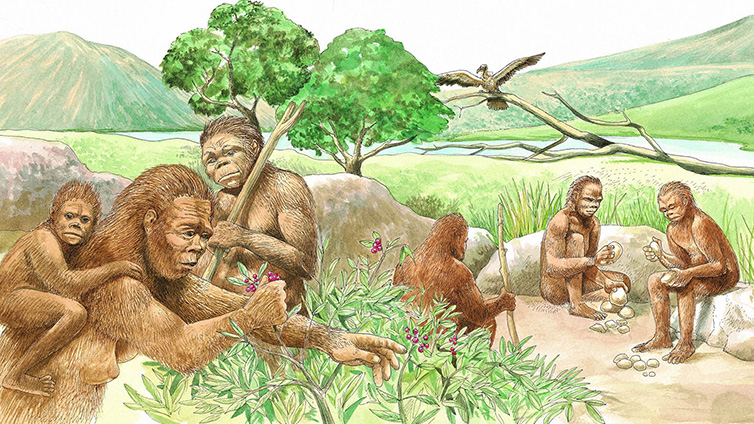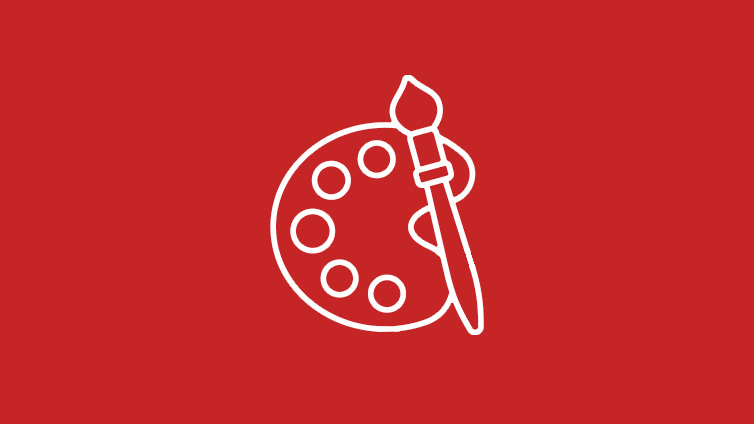Collective Learning
Driving Question: How did early humans share and improve upon knowledge?
Can you imagine trying to tell someone how to play a sport without the use of words or gestures? The ability to create stories and improve on ideas sets humans apart from other species. The key to our success has a lot to do with our use of symbolic language, which allows us to participate in collective learning.
Learning Objectives:
- Define collective learning.
- Describe early evidence of collective learning.
Vocab Terms:
- collective learning
- innovation
- petroglyph
- symbolic langauge
- tool
Opener: Collective Learning
To teach this lesson step, refer to page 2 of the Lesson 4.3 Teaching Guide.
Humans are exceptional in their ability to learn collectively, building on each other’s innovations over time. You can even see it in some of our species’ earliest art.
Passing Down Knowledge
To teach this lesson step, refer to page 3 of the Lesson 4.3 Teaching Guide.
Check out our Reading Guide to learn about the Three-Step Reading approach.
You began life with an incredible advantage over any nonhuman animal on Earth: you’re part of a species with the power to pass knowledge through time.
-
Guiding Questions
-
Before you read
Preview the questions below, and then skim the article. Be sure to look at the section headings and any images.
While you read
Look for answers to these questions:
- Why can’t a lioness or chimp improve upon their knowledge?
- How is symbolic language the key to collective learning?
- Why is toolmaking alone not an example of collective learning?
- What is hafting?
After you read
Respond to the following question: Do you agree with the author that collective learning is an ability that only humans have? Why or why not?
Art and Collective Learning
To teach this lesson step, refer to page 4 of the Lesson 4.3 Teaching Guide.
Check out the OER Project Video Guide for tips on using video in the classroom.
Many Indigenous cultures offer living links to some of humanity’s most ancient knowledge. Watch this video on “reading” petroglyphs, and then put your skills to the test.
-
Guiding Questions
-
Before you watch
Preview the questions below, and then review the transcript.
While you watch
Look for answers to these questions:
- How are petroglyphs made?
- What does Dr. Martinez mean when he says, “these are our libraries”?
- What are some common types of petroglyphs and their meanings?
- Why was astronomical knowledge important to Pueblo society?
After you watch
Respond to this question: Dr. Martinez makes the claim that petroglyphs are a kind of writing and are part of a larger oral tradition through which Pueblo people pass on their knowledge. Can you think of any other types of historical evidence you’ve seen in this course that come from nonwritten sources?
Ancestral Puebloans left behind hundreds of thousands of petroglyphs. These rock carvings communicate ceremonial, practical, and astronomical knowledge.
Key Ideas
Closer: Collective Learning
To teach this lesson step, refer to page 5 of the Lesson 4.3 Teaching Guide.
Remember that Closers are a great opportunity to informally assess student understanding. Read more about that in the OER Project Assessment Guide.
Humans are a learning species—after all, you’re doing it right now. Let’s put it all together and see what you’ve picked up about collective learning.
Toolmaking
To teach this lesson step, refer to page 5 of the Lesson 4.3 Teaching Guide.
Find out how early humans created simple but effective stone tools.
-
Guiding Questions
-
Before you watch
Preview the questions below, and then review the transcript.
While you watch
Look for answers to these questions:
- What are flakes?
- What did early humans use flakes to do?
- When did early humans start improving on their tools by using hand axes?
- Why did early humans use large hand axes?
- What did early humans use to haft materials together?
After you watch
Respond to this question: What are some pros and cons of humans having larger brains?




